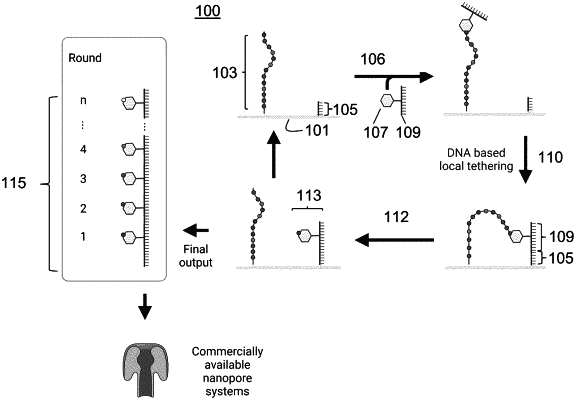| CPC G01N 33/6818 (2013.01) [C12Q 1/68 (2013.01)] | 30 Claims |

|
1. A method of sequencing a peptide at single-amino acid resolution, comprising:
(a) providing said peptide, a capture moiety comprising a first nucleic acid molecule, a linker, and a second nucleic acid molecule;
(b) coupling said linker to a terminal amino acid of said peptide;
(c) coupling said linker to said second nucleic acid molecule;
(d) coupling said first nucleic acid molecule of said capture moiety to said second nucleic acid molecule;
(e) cleaving said terminal amino acid from said peptide to yield an amino acid-linker-capture moiety (AALC) complex;
(f) providing an additional linker comprising a third nucleic acid molecule, wherein said additional linker is capable of coupling to an additional amino acid of said peptide;
(g) coupling said additional linker to said additional amino acid, thereby generating an additional amino acid-linker complex;
(h) coupling said additional amino acid-linker complex to said AALC complex;
(i) cleaving said additional amino acid from said peptide, thereby generating a stacked AALC complex;
(j) translocating said stacked AALC complex through a nanopore or a nanogap;
(k) during (j), measuring a current signal, thereby obtaining a measured current signal; and
(l) using said measured current signal to determine an identity of said terminal amino acid and said additional amino acid, thereby sequencing said peptide.
|